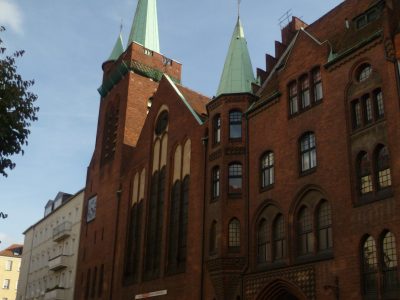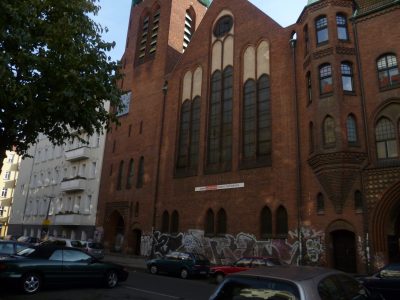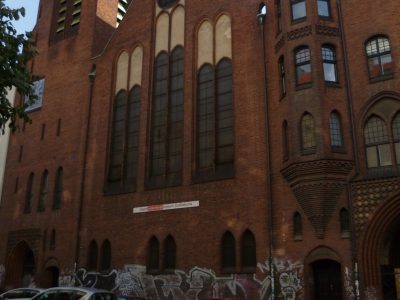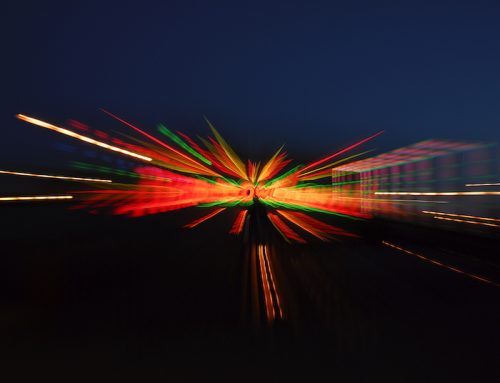Bullet holes on the outside of the old church in Friedrichshain, Berlin, caught my eye, and lead me inside.
I was curious about the pock-marked church as it reminded me of visits to Dublin and similar scares on the GPO, site of the Easter rising of 1916 where a repressed people, proclaimed independence from the UK.
We’d spent the morning after the Berlin Marathon (my fifth, clocking a respectable 4:25) mooching about Friedrichshain. I know that Berlin is full of fascinating museums and galleries, but Widerstands is definitely off the beaten track, and offered us a different perspective on the city’s rich, diverse, and often traumatic, history.
A gnarly old man with quite long white hair and a bushy mustache welcomed us into the church in faltering English – which was much better than our scant German – and started explaining the history of this intriguing building.
A tribute to youthful rebellion, Widerstands was originally built as a church in the early 20th century. A Scottish organist continues to play recitals in the church hall, our guide told us. During the 1970s, when the GDR made it illegal not to work, Widerstands’s vicar offered voluntary work to young rebels who moved into the church to live and work there, even using one of the rooms off the hall to “make children”, as the old man put it.
Brought to life through audio recordings, video displays and evocative black and white photographs, described with passages of German text mounted on scaffolding poles, the permanent exhibition in Widerstands is called “Don’t wait for better times”. Google’s automated translation of the museum’s website explains:
The exhibition gives an exemplary insight into the workings of a predominantly culturally formed opposition youth scene, which was directed against state paternalism and repression and in particular emerged in the last decade of the GDR is an organizational basis under the umbrella of Protestant churches.
Our guide showed us around the church and, at one point, ushered us through to a back room and started unpacking photographic prints from the rebellion, from 1948—1989, using them to further illustrate the unfolding history of the building, and its various purposes, over the years. He explained how local Punks used the building for their own recreation including, the act of ‘making babies’, although he was keen to reassure us that no babies were born within! The gun scares were from the second world war
We could easily have passed by Widerstands without knowing what insights into the local area and the part that the local youth had to play in the culture of what has to be one of Europe’s most happening cities.
We regretted not being able to read or speak German properly because Widerstands Museum is, much like Berlin itself, incredibly rich, varied and multidimensional in the story it tells about the city. I can’t tell you much more about it than that, other than to very much urge you to visit if you’re in Berlin. Check out the museum’s website (using a translation service, such as Google Translator or Babelfish) for more information and revive some of the spirit of rebellion that make Germany’s capital city so exciting.
Maybe we’ll get a chance to visit Berlin and record some insights from Widerstands and other culturally significant, streetwise to create off the beaten track tours for Walking Heads?
http://www.widerstandsmuseum.de









Leave A Comment